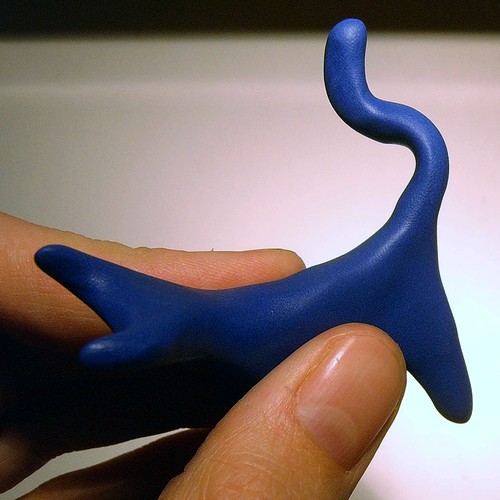How to Make Polymer Clay Cats
from wikiHow - The How to Manual That You Can EditCreating these fun creatures is not difficult and will start your own sculptured collection. They are great to give as gifts, or just to add them to your shelf containing other precious art pieces.
For More Information's about the Marble Sculptures please visit Here!
Steps
Start by kneading the clay into a ball. Squish and roll it and warm it until is is a soft pliable consistency. Make it spherical and work it from there.Pull out the various appendages: Four more-or-less equal legs, a longer tail and a fatter head. Give the head a couple of ears, and it should already be starting to look a little bit like a cat.
Keep sculpting until it's a plausible cat shape. It might even have some personality - if so, you might like to go with it.
Keep making the tail more tail-like, keep making the head more cat-like, and hopefully a personality will emerge, whether through design or of its own accord.
Roll out a sausage of glow-in-the-dark clay for the eyes (it’s easier to divide a sausage evenly). Surprise cat eyes glowing in the dark are amusing but use your own personal preference.
Split the sausage into two equal parts and roll them into balls. Work carefully on the eyes, as they are the single most important part of almost any critter. Every little change or move can change the look. For example, unevenly sized eyeballs give an air of derangement. So take care when working with them but be prepared for them to surprise you.
Attach the balls to the front of the head, and presto! You now have a cat that can stare at people.
Split a very small black sausage of clay in half and roll up the pieces to make the pupils. Attach them to the eyes. This is one of the most delicate parts of the whole process, because the amount of clay involved is so tiny and black; you may need to use a sculpting tool or a blunt knife to attach them to the eyeballs.
Give the cat eyelids (optional). You can give the cat upper and lower lids, or stick with just upper lids. Make them from a semi-circle of clay, created by forming a ball, then squashing and halving it.
Shape the lids into rough semicircles and carefully affix them at a precise angle. The way that the lids are attached can easily make the difference between a critter which is sweetly looking for affection, and one which is brimming over with malevolence.Take care in attaching them
Carefully concentrate on the details of its body language. Make the cat look the way your imagination and artistic nature take you.
- A tail is a beautifully expressive thing
- The set of a cat’s ears and the angle of its head can tell you a great deal.
- The way it is standing is crucial.
Tips
- The directions provided in this article are to assist you to learn how to sculpt this piece. The final sculpture that you create, however, should be guided by your own creativity; after all, it will live in your home, and it should reflect the artist in you.
- Use any color that pleases you; be creative and make it multi-colored if you wish.
Warnings
- Before the piece is hardened, be especially careful with the legs. Handle them gently, and grasp it lightly around the belly. The shape will not remain until you have baked it.
Things You'll Need
- Purchase any brand of oven-baking polymer clay, such as Sculpey III, Premo or Fimo Classic or Soft.
- Colors of your choice.
- For the pupils buy black or other dark polymer clay.
- For the irises, white, glow-in-the-dark or green polymer clay work well.
Related wikiHows
- How to Animate Clay
- How to Sculpt Using Sand and Portland Cement
- How to Mix Plaster for Sculpture
- How to Do Ceramic Sculpture
- How to Learn All About Polymer Clay
- How to Make a Polymer Clay Tiny Book
- How to Paint a River Rock
- How to Soften Polymer Clay
External Links
- oolong blog Original source of this article. Shared with permission.





























